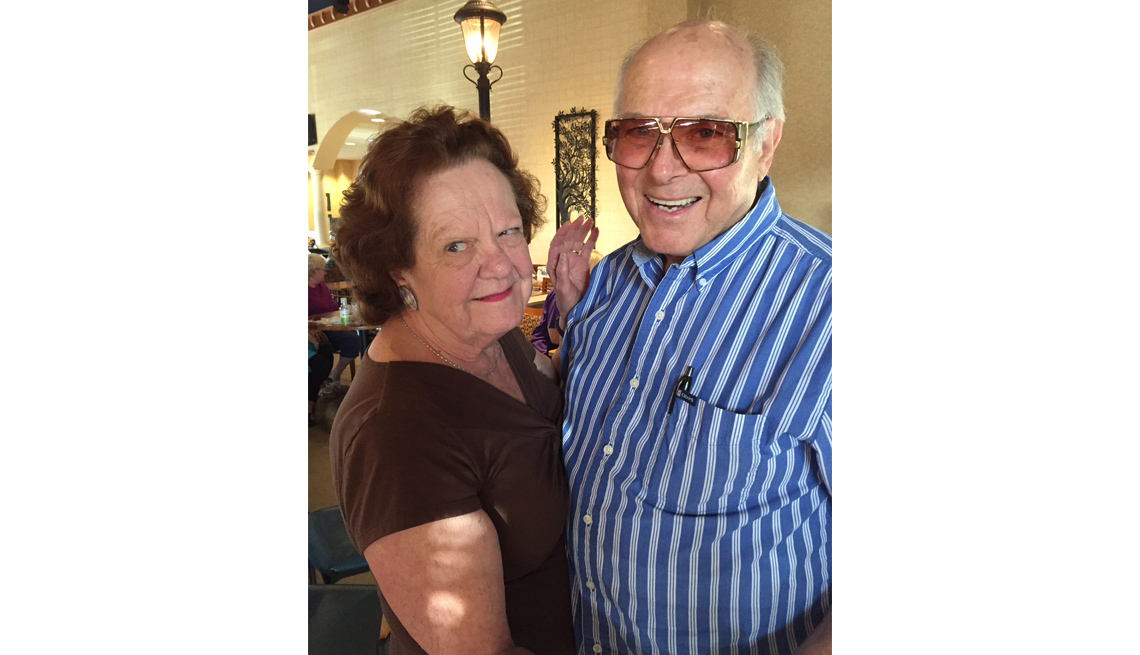Play all audios:
Not every community has a Wegmans, nor does every Wegmans want to host a weekly dance event. However, the following "recipe" can help individuals, groups and communities get their
neighbors dancing. 1. THE VENUE Wegmans aside, dances are held at community centers, senior centers, gyms, banquet halls, ballrooms, American Legion Halls, dance studios and even soccer
fields — anywhere there's big, open floor space. Nels Carman, programmer at the Penfield Recreation Department in Penfield, New York, arranges Big Band dances 10 times a year for the
community center, which has an auditorium with a stage and a gymnasium floor. Carman suggests choosing a consistent site and, if the community has non-driving seniors, arrange bus or van
transportation. 2. A BAND OR A DJ? A DJ might cost less than a band, but Carman says the DJ needs to "work with people on requests and know how to get people out on the dance
floor." His community center inherited a 17-piece big band that was started in 1954. The center doesn't pay the band but offers it free rehearsal space. Carmen likes having a band
at dances because a good band leader will tailor the music to the dancers' expectations. 3. EQUIPMENT Beverly and Bill Photo by Stacey Freed Social halls or community centers often have
their own sound systems — amplifiers and microphones — but bands and DJs usually bring their own sound equipment. 4. TO CHARGE OR NOT TO CHARGE? Most of the Rochester dances charge low fees
for participants. (Carman's group asks for a $1 donation to cover the costs of coffee and cookies and new sheet music.) The decision to charge or not depends on how much the organizers
have to pay for the music, venue, food and drink, or publicity. 5. SETTING THE MOOD Sometimes a dance can be just a dance. Sometimes the event can have a theme or be for a cause. To engage
more people, instructor Brill suggests holding a beginner mini-lesson at the start of an event. "So many people are afraid to dance," she explains. "There's an emotional
barrier. You only have one chance to make a newcomer feel comfortable and confident." 6. HELPING HANDS Kathie Campbell, president of Rochester's Flower City Jazz Society, organizes
12 dances a year, each of which features a band (which is paid for its time). Campbell is aided by a board of dedicated volunteers — a treasurer, booker, hospitality team, membership
manager, newsletter editor. 7. PUBLICITY AND MARKETING Campbell promotes the Flower City Jazz Society dances through a monthly newsletter, a website and counter cards that members give out
when they attend different functions. Carman says it's difficult to reach his crowd, who are mostly in their 70s, with online tactics. He prefers telling the really talented ballroom
dancers about upcoming dances and then promoting their presence at events. He has also found that some people are more interested in following a particular band or musician and will attend
dance events because of the talent. "It's all about constant networking," he says. At every dance event local organizers leave information about other dances. In the past
year, Goody Freed created what is now known by many in the Rochester dance community as "Goody's White Paper." It lists all the local dances, their dates and venues. Another
big push for the local dance scene was a 2015 feature in the Rochester edition of _55 Plus_. It's also important to get dances listed in online calendars and in regional and daily
newspapers. No matter how an audience is reached, Brill stresses that all publicity should "let people know that beginners and all ages are welcome — with or without a partner."
The best way to get new people dancing is to encourage the general dance community to go dancing. "Dancing is addictive and dancers love to dance," says Brill. "They'll
promote what they do by just getting out there." LEARN MORE * Just for fun, check out this "Uptown Funk" video featuring dancing seniors. * Located in Mt. Lebanon,
Pennsylvania, Yes, You Can Dance! partners with community organizations, dance and health professionals and educators to create dance opportunities for seniors, veterans, and people with
Multiple Sclerosis or others who may have special needs. * Senior centers and associations such as the Amarillo Senior Community in Texas and the Senior Dance Club of Nevada in Reno sponsor
dances. Check out your local center. * The nonprofit Dancing for the Dream, which helps promote dancing among active adults in the U.S., produces line dance health seminars and has step
sheets and videos on its website. _Stacey Freed is always happy to dance when she's not working as a freelance writer from her home in Pittsford, New York._ _Page published July 2015_

